
Don’t Call It a House Boat: A Seattle Architect Pours Big Ideas into a Tiny, Award-Winning Floating Home
An architect finishes a re-build of a classic Washington float home just in time to welcome a new baby.
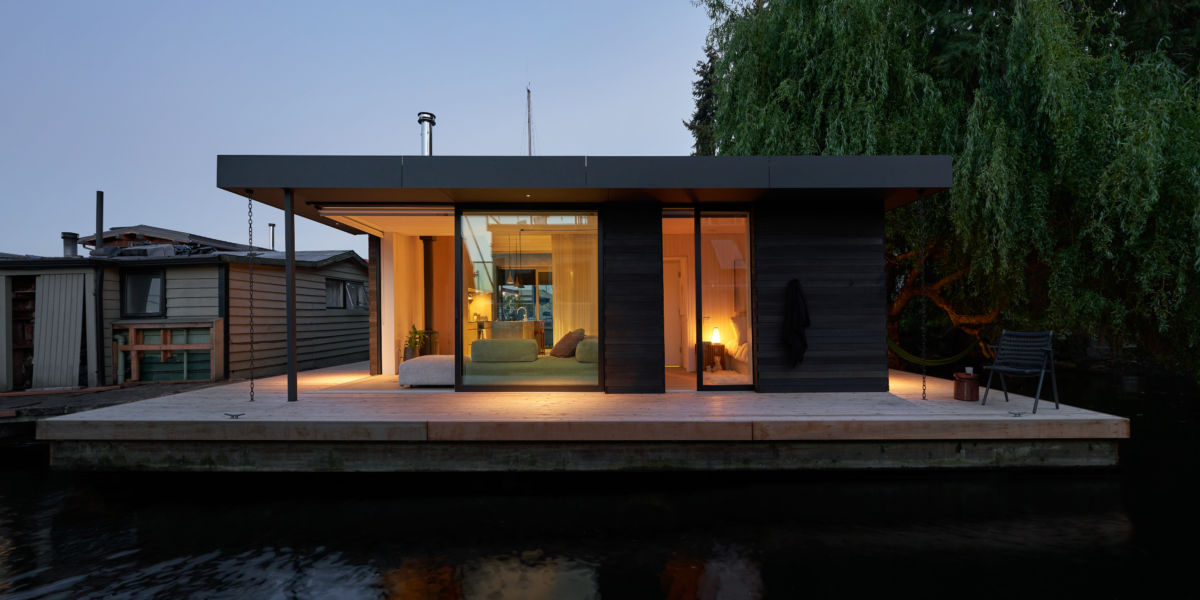
Kevin Scott
We only recommend things we love. If you buy something through our site, we might earn a commission.
“I find it kind of hilarious that I live in a house on the water,” says Suzanne Stefan, a principal architect at the Seattle-based Studio Diaa, who built this small two-bedroom floating home for her young family. “I’m more of a grounded, mountain person. This was always my husband’s dream, not mine. I think when we got together he was excited to have an in-house architect to take on the project.”

Kevin Scott
When the couple met and married, a 1920’s-era house built on a log foundation, anchored in a slip off of a dock on the eastern shore of Lake Union, entered Stefan’s life. As an architect with a thoroughly modern point of view, living in this style of home, made popular in the 1920s and 30s when shantytowns populated by boat builders and fishermen sprung up along the city’s waterfront, hadn’t crossed her mind. At the time when it was built, this kind of structure was an affordable depression-era housing solution, and no one dreamed that they would one day be in-demand million-dollar homes with Sotheby’s agents circling to sell them. Many of the structures were hastily built with little architectural integrity. And this house was no exception.
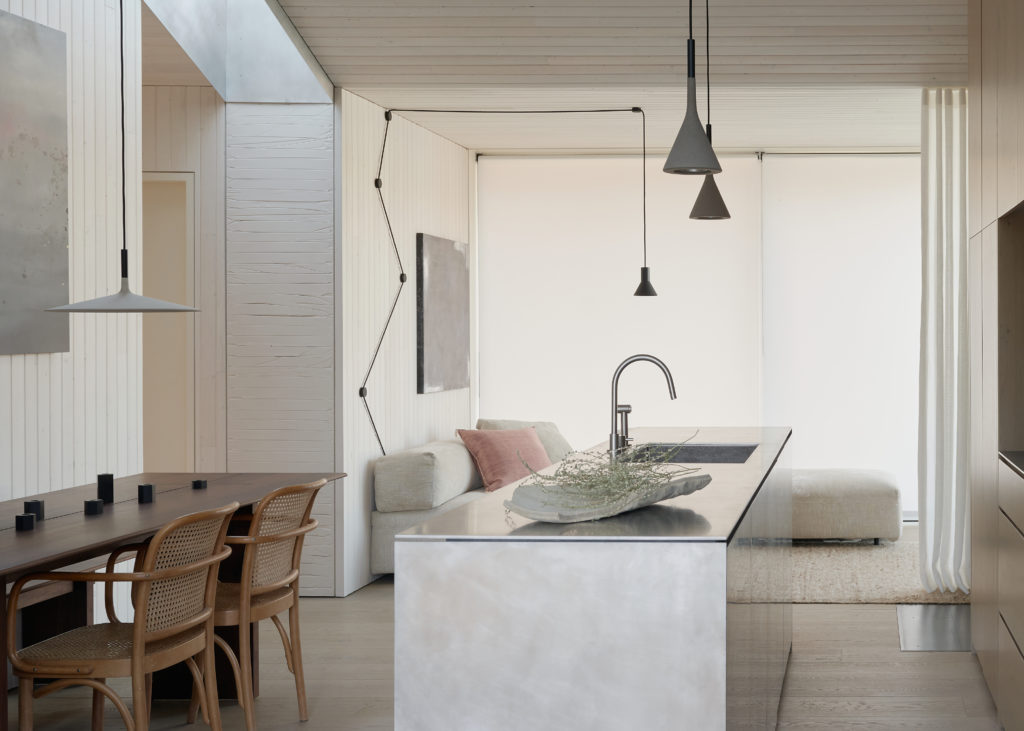
Kevin Scott
“So many of the alterations to these houses were made cheaply, out of necessity, and once we peeled back the skin of the house we saw what a mess it was,” Stefan says. With a baby on the way, the couple had to make quick decisions about how to remodel the house and move in on a condensed timeline. The permitting process to expand the house—which is a mere 650 square feet—would have taken two to three years. Instead, Stefan worked with what she was given, including a bound-log foundation made of old growth trees, the largest of which is five feet in diameter.
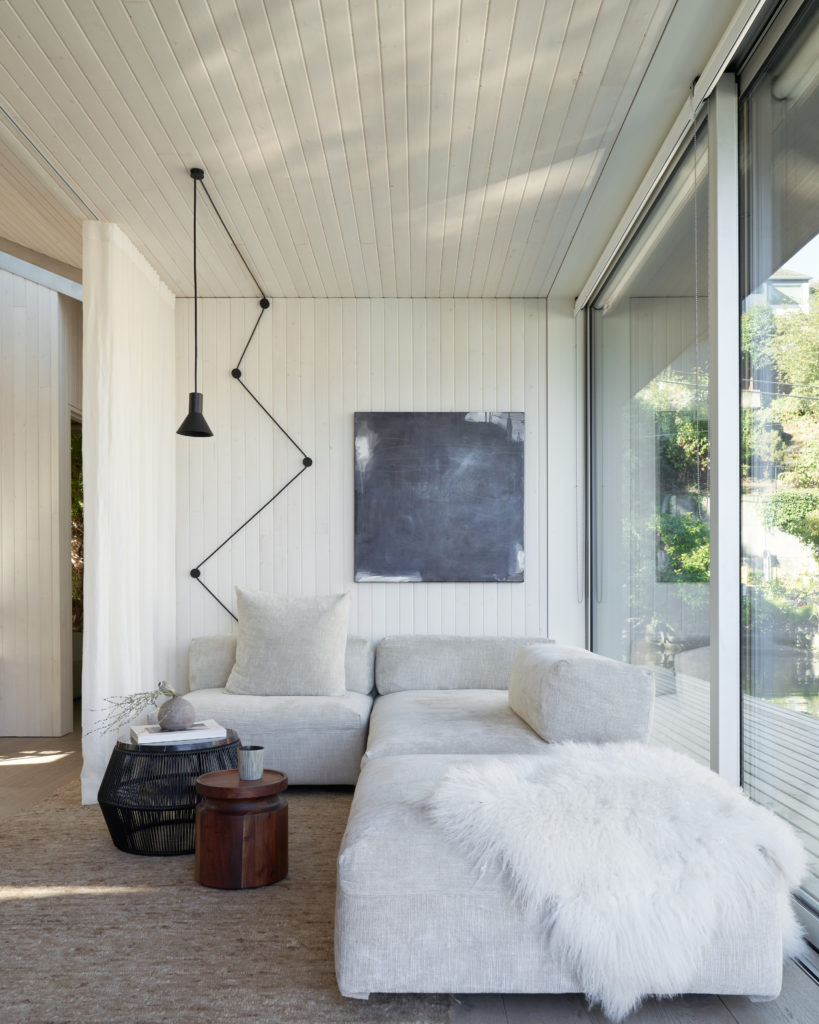
Kevin Scott
Stefan’s design, which was just celebrated with a prestigious AIA Home Architecture Award, wastes no space whatsoever. The corridor is just seven square feet. Most storage cabinets extend from the floor to the ceiling. The couple’s bed, positioned on hydraulic lifts, raises to become storage for winter gear and off-season clothes. There is a scant 24-inch perimeter around the bed to move around the room. The second bedroom, their daughter’s, has built in storage and a long daybed along a wall.
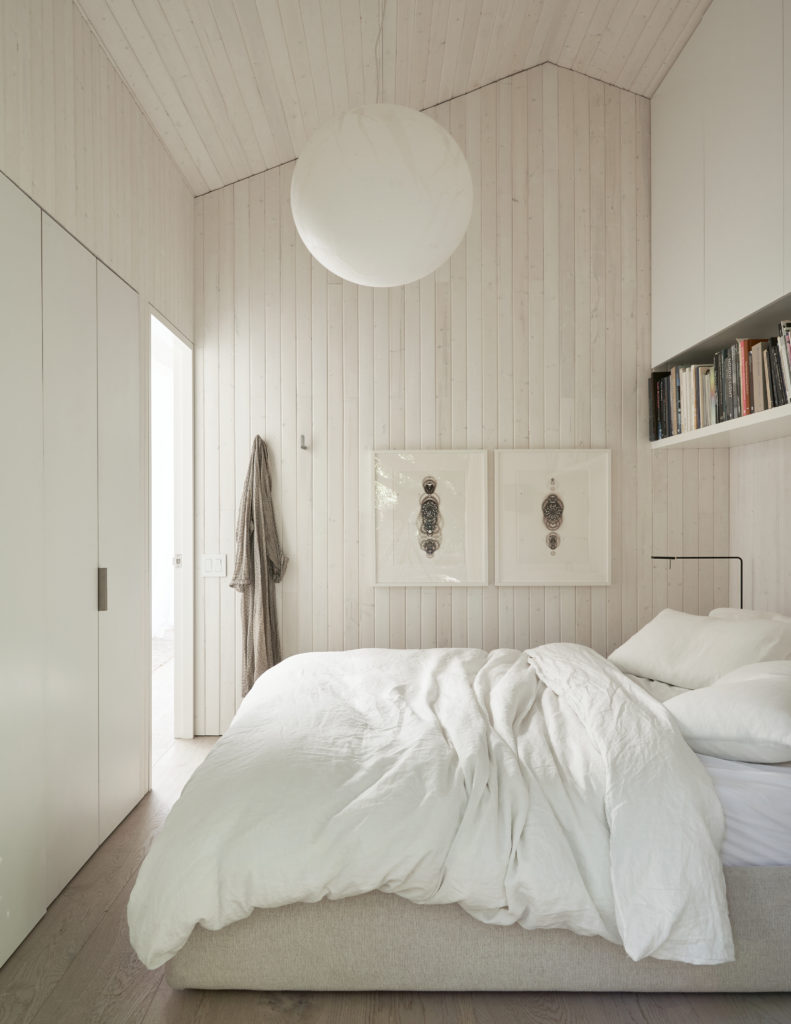
Kevin Scott
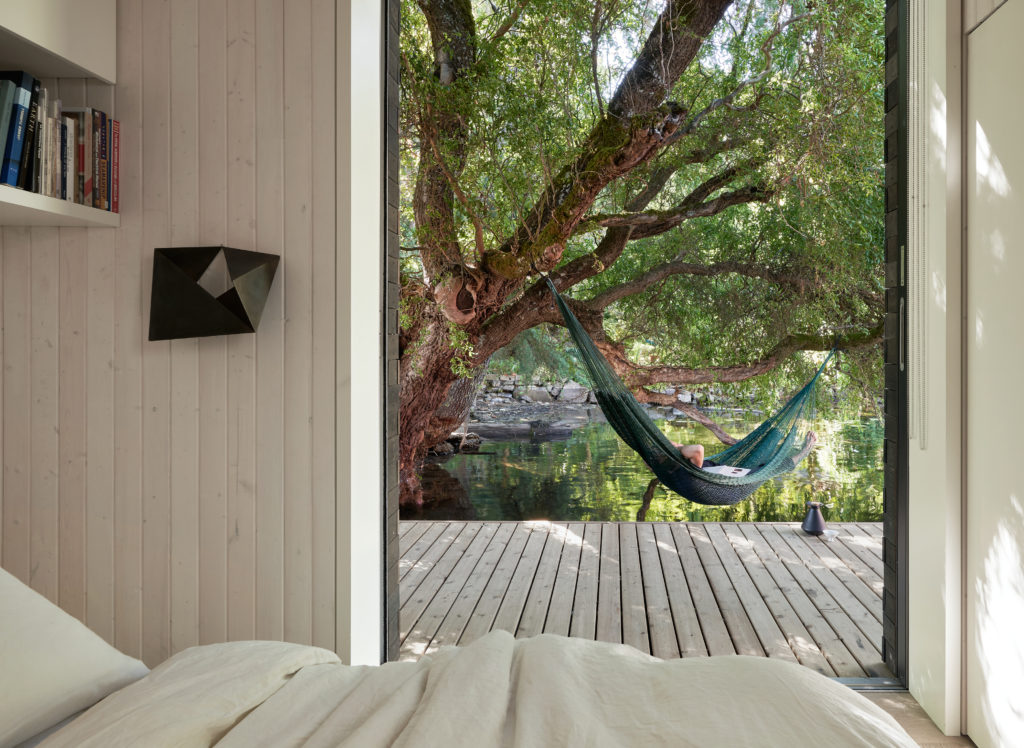
Kevin Scott
“If we want to sit down on a chair, we have to go to the other room,” Stefan says. “We use the deck, which is five feet wide along the perimeter of the house, to move from room to room. My daughter’s play tables and easels are outside on the deck. I always say that if we celebrated Christmas we couldn’t live in this house. I wouldn’t have anywhere to store the decorations.” There is a custom-built cabinet for a large family Menorah, though.
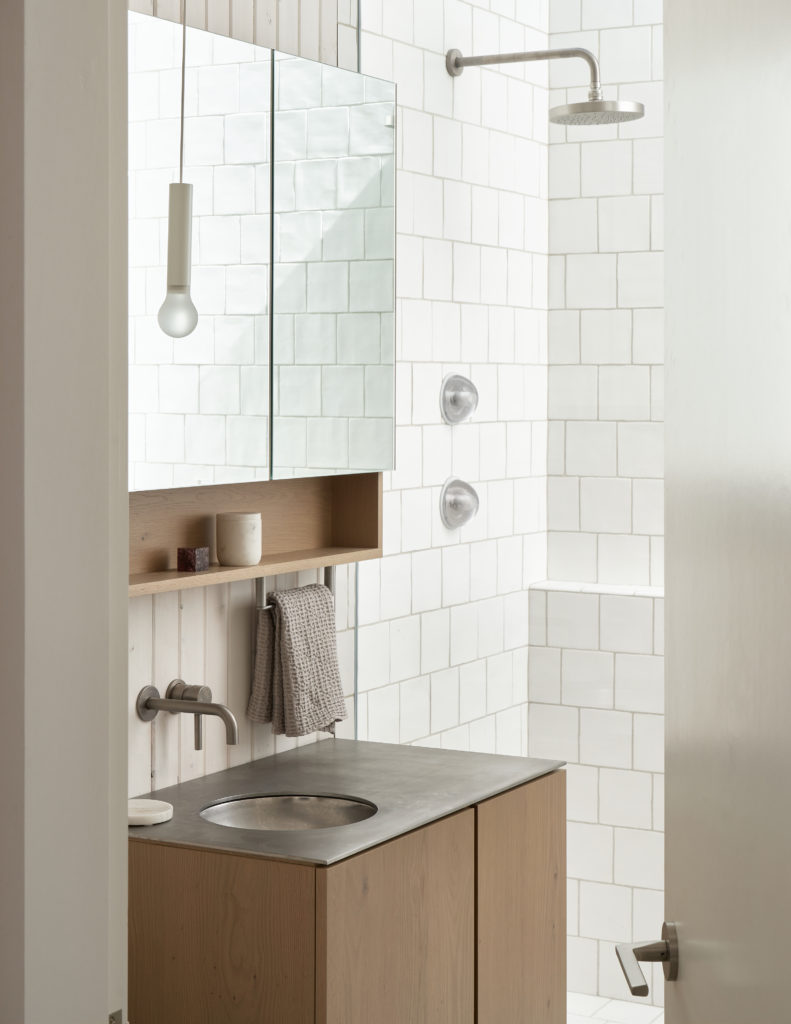
Kevin Scott
The sleek, no-frills design appeals to their minimalist nature, and her trouble-shooting efficient living expertise as an architect. And the peaceful life in the close-knit community on the lake with a young toddler definitely has its magical moments.
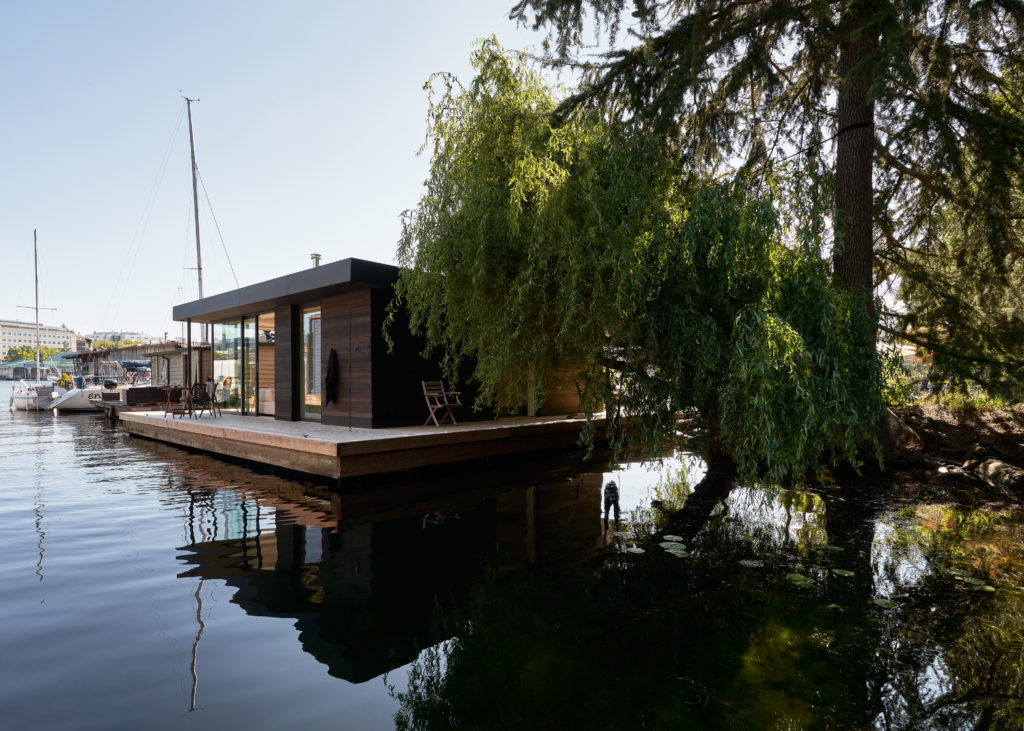
Kevin Scott
“There are ducks that come around the house because they know my daughter will feed them stale crackers. We see beavers and otters every week. And there are two herons that fish off of our deck. She thinks they’re her friends,” she says.
If looking at these photos inspires you to downsize and live on the water, where you might paddle a kayak to visit your neighbor, you’re not alone. Demand for these float-dwellings has skyrocketed in the last year. Under existing city of Seattle codes, only 500 floating homes are permitted to dock permanently within city limits. And it’s the same for houseboats, which Sleepless in Seattle fans may know, are different structures.
“Technically, a house boat is a vessel with a dwelling on it. It has to have a motor attached,” explains Stefan. “This one doesn’t have a engine. It’s not going anywhere.”
